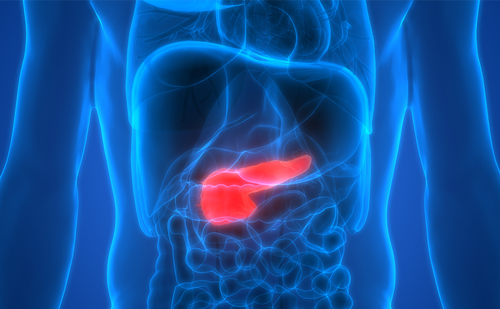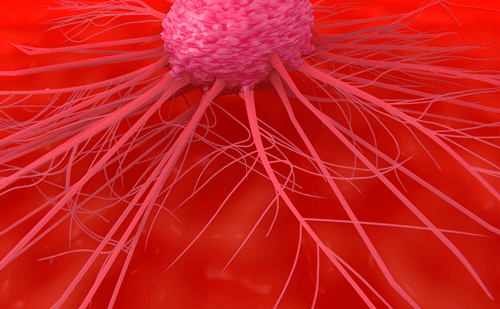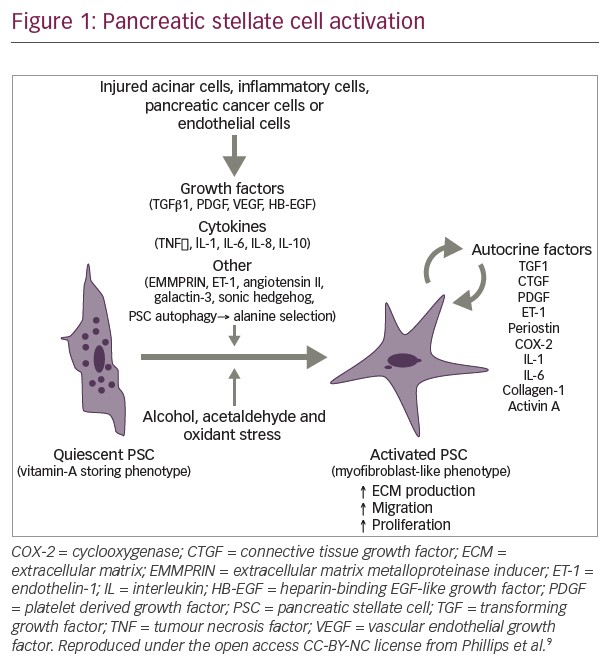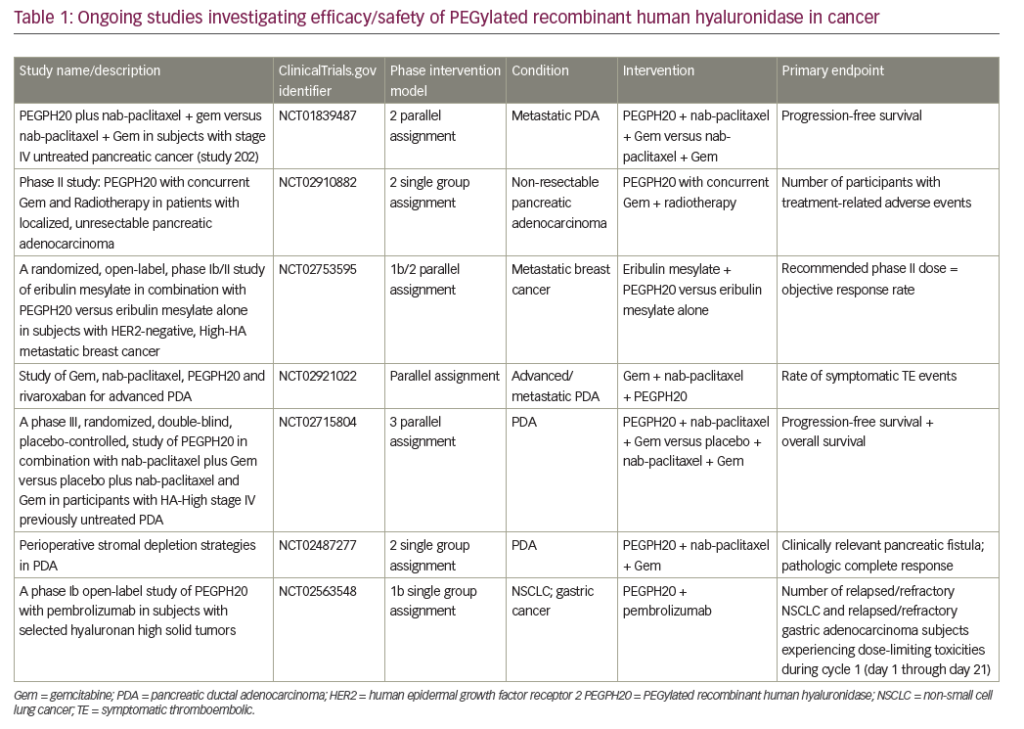Despite many years of continuous effort, pancreatic carcinoma remains a highly lethal disease and a challenge to the medical community. Most patients will be diagnosed in an advanced stage of the disease and will be candidates for oncological palliative therapy or supportive care only. These patient groups have a life expectancy of only a few months. It is documented that less than one of these patients will be alive after five years.1,2 Surgical resection remains the only hope for long-term survival, but this option is available only for patients with a tumour confined to the pancreas. In population studies, 5–12% of patients were candidates for pancreatic resection.3–6 The era of modern pancreatic surgery began with the introduction of pancreaticoduodenectomy (PD) in the US by Whipple in the late 1930s;7 however, the operation had previously been performed in Europe by Codivilla in 1898 and by Kausch in 1912.8 Whipple’s operation was soon recognised as a demanding and complication-prone procedure. In the first few decades, mortality rates exceeding 20% were reported even by large institutions, and some authors suggested that the procedure should be abandoned in favour of safer bypass surgery.9,10 However, further development was inspired by some early surgical series with no case fatalities.11,12 Today, pancreatic surgery is a standard procedure and the mortality rate should not exceed a few per cent (see Table 1).13–24
While PD (Whipple’s operation) is the standard procedure for cancer in the right hemipancreas, resection of the pancreatic tail is used for left-sided pancreatic cancer.25 Total pancreatomy is indicated for diffuse or multifocal disease, but it is used judiciously as it inevitably causes severe metabolic consequences (complete endocrine and exocrine insufficiency). Further pancreatic procedures have been designed, mostly as technical modifications of Whipple’s operation, to alleviate the short- and long-term complications of the procedure. This article provides a summary of current standards in pancreatic surgery, with special reference to technical achievements and post-operative outcome. In the last section, the most recent advances in adjuvant oncological therapy are discussed. Although surgery is crucial in the treatment of pancreatic cancer, it is obvious that surgery alone cannot cure the disease in most cases. The grim reality is that the majority of resected patients will eventually succumb to locoregional and/or distant recurrent disease. Classic Pancreaticoduodenectomy
(Whipple’s Operation)
The original description by Whipple in 193526 was of a two-stage procedure that initially aimed to diminish the consequences of coagulopathy due to malabsorption of vitamin K. Today, the term Whipple’s operation is used for an operation that includes en bloc resection of the pancreatic head and duodenum together with the antrum of the stomach, the gall bladder and the distal bile duct. The operation is reserved for pancreatic cancer confined to the pancreas, and the standard procedure is resection with microscopically cancer-free margins (R0-resection) including the regional lymph nodes. Therefore the pre-operative work-up aims to exclude patients with distant metastases (most commonly peritoneal spread and liver metastases) including those with overgrowth on adjacent anatomical structures. Several authors advocate that a pre-operative exploratory laparoscopy with laparoscopic ultrasound should be performed before laparotomy as it is an accurate method of excluding cancer spread to the peritoneum, regional lymph glands and extrapancreatic tissue.27 If the pre-operative investigation does not show extrapancreatic disease, one may proceed to laparotomy.
Whipple’s operation has become a highly standardised procedure. The technical details are well described by Warshaw28 and Pedrazzoli et al.25 The first phase of the operation includes a thorough inspection of the peritoneal surfaces and dissection of the hepatoduodenal ligament, duodenum, pancreatic head and superior mesenteric vessels, with the dual aim of excluding extrapancreatic spread and preparing for resection. In the second phase, the antrum, the bile duct and the first part of the jejunum are transected. The pancreatic neck is transected over the portal vein and after ligation of multiple vessels between the pancreatic head and mesenteric vessels, the specimen can be removed. The posterior (retroperitoneal) dissection plane is of utmost importance, and the dissection should also proceed very close to the superior mesenteric vessels to remove all perivascular nervous and lymphatic tissue.25 In the third and final phase, gastrointestinal continuity is restored by creating three anastomoses: pancreaticojejunostomy (PJ), hepaticojejunostomy and gastrojejunostomy. Leakage in the PJ, which occurs in 2–30% of patients, is a serious problem after PD as it is a major cause of post-operative morbidity and mortality.18,22,29–37 Consequently, several anastomotic techniques have been described, including the new ‘binding anastomosis ad modum Peng’.38,39 Stenting the anastomosis with a plastic tube represents another approach to reducing leakage; currently, there are two randomised studies suggesting a positive effect of this technique.40,41 Furthermore, several technical modifications of the Whipple procedure have been designed to reduce this risk (see below).
When a post-operative pancreatojejunal leakage occurs, percutaneous drainage rather than re-operation is the initially preferred method today.29,42 Rarely, the pancreatic remnant must be removed due to sepsis or uncontrolled bleeding.43 Improved management of leakage and other complications, which afflict 20–40% of patients, has drastically improved the post-operative mortality rate in the last few decades. In surgical series from more recent years, the reported post-operative mortality rates usually amount to a few per cent only (see Table 1).13–24
There are no randomised controlled studies of pancreatic resection versus no resection looking at the efficacy of the operation. However, there is a randomised Japanese study comparing surgery and chemoradiotherapy for resectable pancreatic cancer, which showed a better survival rate after surgical resection.44 Recent surgical series usually report a median survival of 12–24 months and a corresponding five-year survival rate of 10–20% (see Table 2).13,20,21,23,24,45–49 However, a wide range of outcomes can be noted among different series.
Several studies have performed analyses of factors that may influence the long-term outcome, usually employing multivariance statistics (see Table 3).21,23,24,45,48,50–54 One of the most important factors for achieving a ‘good’ result with surgery is patient selection.50,51 Important patient-related factors are age and intercurrent disease.23,24 Among tumour-specific factors, tumour grade and size have been found to be significant, as has the presence of regional lymph gland metastases (the ‘N factor’).21,23,24,45,48,52–54 While patient-related and tumour-specific factors should influence the pre- and peri-operative assessment, the execution of surgery may have a more direct influence on short- and long-term outcome. As would be expected, a completed R0 resection has repeatedly been found to improve the post-operative prognosis.21,52,53 The presence of post-operative complications such as bile leak and peri-operative blood transfusion has a negative effect on long-term survival, although the causal relationship is not clear.24,48,52 In the last few decades, data have also accumulated that convincingly show an association between the result of surgery and the case load on the surgeon/team as well as the size of the cancer hospital. Several studies indicate that larger hospitals achieve better results after pancreatic resection, in both the long and short term.17,51,55–58 The case load on the individual surgeon seems important, but there may also be other potential but poorly defined factors due to differences in patient selection, referral patterns, waiting lists and so on.57 In the last decade, these data have led to a plea for centralisation of pancreatic surgery in the developed world, although Dutch data indicate that the change may take time.58 However, it is important that, when discussing the organisation of healthcare and technological progress, we keep the surgeon’s and surgery’s roles in perspective. This was eloquently stated by Dr Blake Cady in 1997: “In the field of surgical oncology, tumor biology is king, patient selection is queen, and technical manoeuvres are the prince and princess who try, but usually fail, to usurp the throne”.59 Modifications of Pancreaticoduodenectomy
Several modifications of Whipple’s operation have been described. Pylorus-preserving PD (PPPD) was introduced in 1978 as a more ‘physiological’ procedure.60 Preservation of the hormonal secretion and sphincter function of the antrum–pylorus complex was supposed to give benefits in terms of nutrition and gastrointestinal function. In the last decade, PPPD has been compared with classic PD in several randomised studies and meta-analyses, and the two procedures have been found to be equal in terms of biliary leakage, post-operative bleeding, wound infection and pulmonary complications, as well as the rate of re-operations and mortality.61–72 An early observation was that PPPD seemed to cause an increased rate of delayed gastric emptying, but this was not verified in the randomised studies (it may have been related to a too early evaluation during the learning curve). Also, regarding post-operative quality of life and long-term outcome, no significant differences have been found. In summary, PPPD and classic PD seem to be equally safe and efficient, but it has been suggested that PPPD should be used carefully in cases of tumours close to the proximal duodenum.73
Pancreaticogastrostomy (PG) was tailored as a safer mode of reconstruction. A further suggested benefit is the possibility of inspecting and cannulating the pancreatogastric anastomosis by a simple gastroscopy. To date, there have been four randomised controlled trials comparing PG with pancreaticojejunal anastomosis.74–77 Three of the studies did not reveal significant differences between the two methods, while the fourth randomised controlled trial showed that post-operative abscesses and pancreatic fistulae were less common after PG.76 A meta-analysis from 200678 suggested that PG was the safer mode of pancreatic reconstruction, but was based mainly on observational studies together with only one of the randomised controlled trials.74 Another meta-analysis found PG to be superior or equal to PJ, but signs of bias were also revealed.79 Currently, there is insufficient evidence to favour PG over pancreatojejunostomy, or vice versa.
Ligation or occlusion of the pancreatic duct represent further attempts to reduce pancreatojejunal leakage, but generally these attempts have not been successful. In three randomised controlled trials, duct occlusion did not decrease post-operative complications, but resulted in an increased risk of diabetes.80–82
Adminstration of somatostatin or its analogues aims to reduce the secretion of pancreatic juice and, thereby, the rate or consequences of pancreaticojejunal leakage. Despite a large number of randomised controlled trials and meta-analyses, clear-cut evidence for the use of somatostatin (or its analogues) has not been established.83–100 Specifically, a recent meta-analysis was unable to show a significant reduction of pancreas-specific complications.100 Although it has been suggested that the drugs may be of use in cases of ‘fragile pancreas’ or other technical problems, sufficient data to support this assumption are lacking. Currently, there is not enough evidence for the routine use of somatostatin (or its analogues) in pancreatic resection, even though many surgeons use it when the pancreatic remnant is soft or has a small duct.
Other Pancreatic Resections
Left-sided resection is indicated for malignancies in the pancreatic body and tail.25 There are several case series describing short- and long-term outcome, but no randomised controlled trials.101–106 Pancreatic fistulae occur at a rate at least similar to that of Whipple’s procedure, although the consequences may be less grave. Left-sided pancreatic cancers are less often resectable than right-sided cancers, as they are notoriously symptom-free until they are in an advanced stage.4 Involvement of the splenic vein or artery does not constitute a contraindication, as long as a radical excision is possible. When compared stage to stage, long-term survival seems to be similar to that of pancreatic head cancer.106,107 Thus, although it is an option for a subset of patients only, resection of left-sided pancreatic cancer represents an effective treatment in selected cases.
Total pancreatectomy is an option for diffuse neoplastic disease (such as intraductal papillary mucinous neoplasms), and is also rarely used for cancers growing diffusely or multifocally in the pancreatic body. The long-term nutritional and metabolic sequelae (especially brittle diabetes) of this operation make it a less attractive alternative if a lesser resection is possible.108
Extended Procedures
The poor long-term prognosis after PD, as well as the high rate of lymph node metastases (40–60%) in many series, is the rationale for attempts of more extensive lymph node dissection. Early uncontrolled series were published from Japan, and later three randomised controlled trials compared extensive lymphadenectomy with the standard operation.19,109–113 Extensive lymphadenectomy did not increase post-operative morbidity or mortality, but failed to increase long-term survival.19,109–113 There seems to be a higher rate of late sequelae, but the data are not consistent.19,111–113 Also, a meta-analysis of 16 comparative studies failed to show a significant benefit of the extended procedure.114 To conclude, extensive lymphadenectomy does not increase post-operative morbidity or mortality, but does not improve long-term survival either. However, if better adjuvant treatment becomes available, this conclusion may have to be re-evaluated. Some 40% of pancreatic cancers are locally advanced at the time of diagnosis, often due to adherence to the portal or mestenteric vein. This is often regarded as a criterion of unresectability by many surgeons, who will then proceed with resection of an adherent vein only if the ‘point of no return’ has been passed, while other surgeons consider vascular resection a necessary adjunct to PD. Consequently, some authors report high rates of vessel resection in their surgical series.115–117 There are no randomised controlled trials available comparing pancreatic resection with and without vascular resection; the literature consists of several case series reporting various pancreatic resections with varying rates of venous and/or arterial resection. Recently, a systematic review of the outcome of portal–mesenteric vein resection during pancreatectomy was published.116 In this review, 52 studies describing 6,333 pancreatic resections were analysed. In 1,646 patients (26%), a concomitant venous resection was performed. The analysis revealed that this is a time-consuming procedure with high intraoperative blood loss. The reported post-operative morbidity and mortality rates were 42 and 6%, respectively (in the studies providing such information). A positive resection margin (R+) was present in 40% of patients and lymph node positivity (N+) was 67% (range 42–97%). The calculated median survival was 13 months (from 31 studies including 917 patients). Thus, the review shows that venous involvement is associated with high rates of positive resection margins and lymph node metastases, and that the possibility of cure by surgery is improbable. The same should be true for arterial resection. However, from a palliative point of view, pancreatectomy plus venous resection and reconstruction can be performed as safely as conventional pancreatectomy and is associated with a better survival rate than other palliative measures.117 Taken together, a judicious use of vascular resection seems appropriate. At the same time, one may state that pancreatic resections should be performed only in centres where there is at least competence for the resection and reconstruction of the portal–mesenteric veins.
Adjuvant Oncological Therapy
Although five-year survival rates may have improved, survival at five years does not equal cure. In reality, death continues beyond five years, and the absolute majority of resected patients will die from the disease.2,45,118 It is obvious that pancreatic carcinoma cannot generally be cured by surgery alone. Adjuvant therapy was developed on the basis of studies that indicated – contrary to common knowledge at the time – that 5-fluorouracil (5-FU) and radiation had a demonstrable effect in advanced pancreatic cancer.119–123 In the mid-1980s, the Gastrointestinal Tumor Study Group (GITSG) published a small randomised controlled trial and a supportive non-randomised trial that showed a survival benefit for radiotherapy combined with 5-FU versus surgery alone.124,125 Although criticism was not lacking (few patients, slow patient accrual, selection bias), these studies had great impact on the therapy tradition in the US, and several non-randomised treatment series were subsequently published.30,126–130 Europeans were more hesitant about adjuvant therapy, especially as two European randomised controlled trials failed to show a survival benefit.131,132 A turning point was the European Study Group for Pancreatic Cancer 1 (ESPAC-1) study.53,133,134 In a joint effort between 53 hospitals in 11 countries, 289 patients were randomised into a 2×2 factorial study, a further 68 patients were randomly assigned to chemoradiotherapy or no chemoradiotherapy and a further 188 were randomised to chemotherapy or no chemotherapy. Subgroup analyses (for which the study was underpowered) showed median survivals of 17 months in the observation group, 12 months with chemoradiation, 22 months with chemotherapy alone and 20 months with both chemotherapy and chemoradiation. The corresponding five-year survival estimates were 11, 7, 29 and 13%, respectively. The study group concluded that adjuvant 5-FU had a positive effect on survival, while chemoradiotherapy seemed to have a negative effect.134
The positive results with palliative gemcitabine for advanced pancreatic cancer made this a logical candidate for further studies.135 In 2007, the results of a randomised controlled trial of adjuvant gemcitabine versus surgery alone (the CONKO-1 trial) were published.136 Post-operative gemcitabine significantly delayed the development of recurrent disease after complete resection of pancreatic cancer compared with observation alone: the median disease-free survival was 13 months versus seven months in the control group. At the 2008 American Society of Clinical Oncology (ASCO) annual meeting, it was further reported that post-operative gemcitabine prolonged medial overall survival from 20 to 23 months. The corresponding three- and five-year survival rates were, respectively, 36 and 21% with gemcitabine versus 20 and 9% in the observation group.137 In a Japanese study, adjuvant gemcitabine resulted in a significantly longer disease-free survival than surgery alone: 11 versus five months. The corresponding median overall survivals were 22 and 18 months, respectively.138 Further weak support was given by the Radiation Therapy Oncology Group (RTOG)-9704 trial, in which gemcitabine added before and after flurouracil-based chemoradiotherapy resulted in a slightly longer overall survival than the addition of 5-FU (21 versus 17 months, which was statistically non-significant).139 By contrast, the randomised ESPAC-3 study failed to show a significant difference in survival between post-operative adjuvant 5-FU and gemcitabine; median survival was a reasonable 23 months in both groups, which compares well with earlier studies.140 Thus, although the most recent randomised controlled trials support the use of adjuvant chemotherapy, there is currently not enough evidence to favour gemcitabine over 5-FU in terms of long-term outcome. However, there are indications that the side effects are less severe if gemcitabine is used.140
Some researchers propose that multidrug adjuvant treatment may be more efficient, a strategy that has also been tried in the past.52,126,131,141–145 A regimen of 5-FU, cisplatinum and interferon has shown promising results in phase II studies, but at the price of a high rate of toxicity.146,147 Although many US protocols have included fluorouracil-based chemoradiotherapy, its role in the adjuvant situation remains unsettled. European researchers argue that it is of no proven benefit regarding survival,133,134,140 while the RTOG-9707 study group claims that it decreases the risk of locoregional recurrence.139
A problematic feature of post-operative adjuvant therapy is that as many as 20–30% of resected patients never receive treatment because of slow recovery or other reasons.124,125,132,148,149 Neoadjuvant chemoradiotherapy has been proposed as a more logical way to deliver therapy. Although there may be several potential advantages, they are mostly of unproved clinical benefit.150 Available phase II data indicate that pre-operative treatment is safe and does not increase peri-operative morbidity or mortality, and it has even been suggested that local post-radiation fibrosis may decrease the rate of pancreatojejunal leakage.151–153 In clinical series, neoadjuvant therapy and subsequent pancreatic resection have typically resulted in median survivals of 19–25 months and five-year survivals of 19–28%, which compare well with post-operative therapy.115,142,143,149,151,154–158 However, there is a potential bias introduced by the selection process. Randomised controlled trials proving an overall benefit of neoadjuvant therapy are lacking and the risk of missing a resectable tumour due to growth during the treatment period has been proposed. A further question is whether extensive neoadjuvant therapy may actually cause downstaging, as has been claimed in some studies.156,157,159,160 Further comparative studies between neoadjuvant and adjuvant therapy are needed.
Future Aspects
The improvement in post-operative morbidity and mortality due to better surgical technique and improved peri-operative management is expected to continue. One of the major factors is the early treatment of post-operative complications by a dedicated multiprofessional team (surgeon, anaesthesiologist, gastroenterologist, radiologist and specialised nurses). Substantial improvements in long-term survival cannot be expected without better (more effective, less toxic) adjuvant and neoadjuvant therapies. On the other hand, when better adjuvant therapy appears, further refinement of the surgical techniques may become rewarding. Better oncological therapy may make more extensive procedures as well as treatment of patients with advanced disease worthwhile. The possibility of using pre-operative oncological regimens as neoadjuvant or downstaging therapy needs to be further studied, and relevant comparisons with post-operative adjuvant therapy should be performed.
In recent years, the pharmacological and endoscopic palliation of unresectable pancreatic cancer in particular has been an area of much development. However, more research is needed in this field. Specifically, the role of palliative resection of pancreatic cancer could be investigated further.161 A dedicated, multidisciplinary effort around palliative patients is required; it should be remembered that these patients by far outnumber patients who are resectable with curative intention. ■










